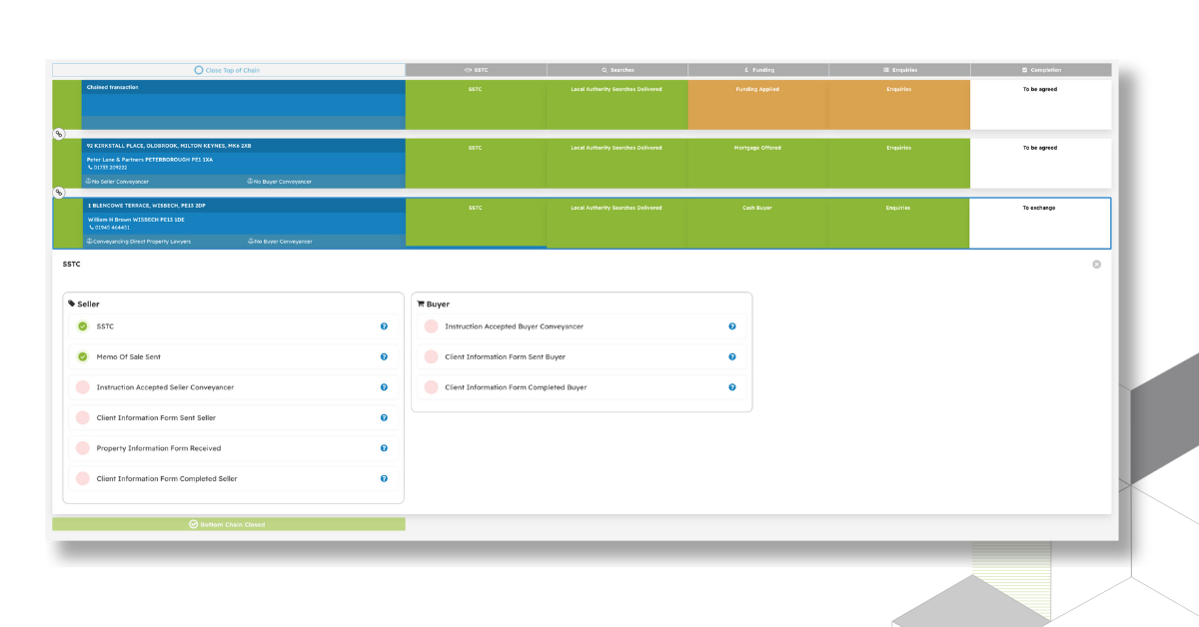The power of incremental change in speeding up completions

According to Landmark Information Group’s recent Insights Report, both sales and purchases have seen substantial increases in the time taken from instruction to completion and exchange since 2007. The instruction-to-exchange metric for sales doubled over 16 years, while for purchases, it increased by 74% – pointing to a general slowdown in the property transaction process.
In the last two years (2022-2023), however, the time from instruction to completion for purchases has decreased by 7%. The time from instruction to mortgage offer received has also decreased by 12%, and ‘search requested to search received’ has decreased by 12%. All of it good news for buyers.
In contrast, the instruction-to-completion timeline for sales has increased by 10% over the past two years, whilst conveyancing queries took an average of 60 days in 2023, which is a 7% increase from 2022. Considering that neither estate agents nor conveyancers get paid until the deal is done, it’s in their best interest to improve this side of the property purchase coin.
Better experience
Despite various industry initiatives aiming to standardise data and improve the process, tangible progress remains limited. The aim is a state of universal data alignment, and to some degree, the delivery of the Full Material Information guidance by the NTSELAT has brought us all one step closer to that. But few will deny that this is a journey with many more steps. And until we solve it (which, in time, I firmly believe we will), the industry seems to be stuck in a Groundhog Day of inertia – i.e. not wanting to make any decisions or move forward with technology or processes in case it’s not the perfect solution.
However, with the house buying and selling process in the state that it is, I do not believe that we have the luxury of prioritising perfection over progress. We owe not only our customers and clients a better experience but also our staff: overworked, exhausted staff members who are trying their level best to manage the deluge of queries and requests that are flung over the wall by justifiably anxious buyers and sellers.
In other research from Landmark amongst agents, conveyancers, lenders and surveyors they found that approximately 20% of their working day (44% for agents) was spent chasing or being chased. More than 50% of agents in the same study indicated that the most significant cause of delays was chain issues.
Updates automatically
In ViewMyChain’s written submission to the Levelling Up, Housing and Communities Committee, we emphasised that over 50% of property transactions in the UK are part of a chain where the completion only occurs when all linked transactions are finalised. Simply put: the slowest link in this chain dictates the overall pace.
Which brings me back to the power of incremental change – and the duty of care we have to not only plan for tomorrow but also deliver improvements today. While we’re all working towards a future state of standardised data (which will require mass adoption of standards and the re-entering of data into new systems), there is a ‘here and now’ solution. A tool that provides pre-built chains and ongoing updates automatically, without the need for manual intervention – and as a result, bridges the gap so successfully that hundreds of agencies, and recently conveyancers, have started to adopt it in the background.
Of course, for those who enjoy its benefits, it’s great to have the ViewMyChain tool as a competitive advantage. But I feel obliged to raise the question: if we can all come together for a more unified tomorrow, should we not simultaneously come together to do whatever we can for a better today?
And if the answer is yes then it necessarily has to be a choice for incremental progress in the present, using tools that are available right here and right now, whilst we work towards a future state of perfection.
*This article originally appeared on Estate Agent Today on 24 July 2024.

